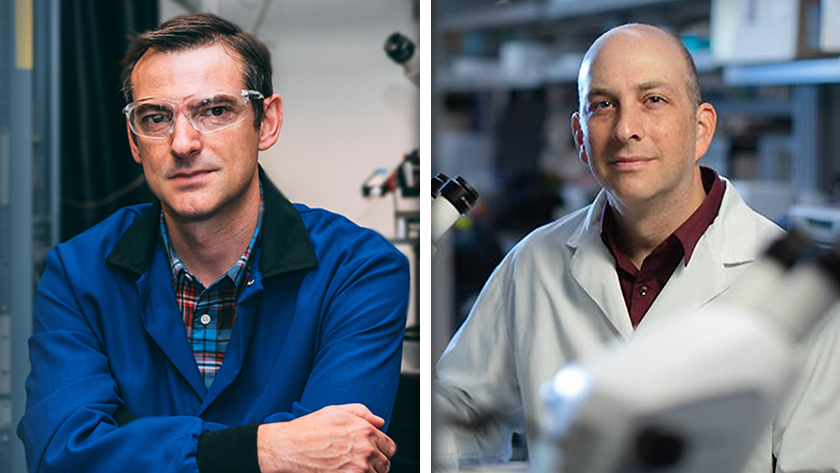
Scientists at the Krembil Research Institute’s Centre for Medicinal Chemistry and Drug Discovery (CMCDD) report a new total synthesis of natural product lipoxin B4 (LXB4), a molecule with neuroprotective properties.
LXB4 is a small lipid molecule that dampens inflammation. Krembil Senior Scientist Dr. Jeremy Sivak and his team found that this molecule is produced in the retina and protects retinal neurons against the damaging effects of increased eye pressure and inflammation in experimental models of glaucoma—one of the leading causes of blindness in people over the age of 60.
“We have been exploring whether we can stimulate the body to produce more LXB4 or deliver a synthetic version of the molecule directly into the retina to treat glaucoma,” says Dr. Sivak.
After discovering LXB4’s key roles in retinal disease, Dr. Sivak’s team focused on strategies to reproduce the molecule in the lab so that they could study its biological effects. To do this, they partnered with medicinal chemist Dr. Mark Reed, a Staff Scientist at the Krembil Research Institute and Director of CMDD.
Starting with readily accessible chemical building blocks, Dr. Reed’s team used a series of medicinal chemistry methods to create the complex molecule from scratch. The team confirmed the molecule’s precise chemical structure for the first time and demonstrated that it has significant neuroprotective activity in a test of retinal neuron survival.
Dr. Reed says, “Our team has shown that LXB4 can be produced in large quantities synthetically and can easily be modified to change its activity. This opens the door to studies that explore how LXB4 functions, which will ultimately shed light on how to enhance its action to treat inflammatory and neurodegenerative diseases.”
In addition to the molecule serving as a potential treatment for glaucoma, a deeper understanding of LXB4 could unlock new treatments for a host of diseases in which inflammation is a contributing factor, such as lupus, asthma, cancer and Alzheimer disease.
“Drug development is a complex undertaking—it often takes over 10 years to bring a new drug to market,” says Dr. Reed. “The close collaboration between scientists and in-house medicinal chemists at Krembil is enabling us to accelerate this process and translate discoveries into life-changing therapies.”
This work was supported by a LAB150 grant administered through Toronto Innovation Acceleration Partners, the Krembil Foundation and the UHN Foundation. Nuclear magnetic resonance (NMR) spectrometers were funded by the Canada Foundation for Innovation and the Princess Margaret NMR Core Facility was supported by the Princess Margaret Cancer Foundation. Dr. Jeremy Sivak holds the Graham Trope Chair in Glaucoma Research and is an Associate Professor in the Department of Ophthalmology and Vision Sciences at the University of Toronto.
Lee CF, Brown CE, Nielsen AJ, Kim C, Livne-Bar I, Parsons PJ, Boldron C, Autelitano F, Weaver DF, Sivak JM, Reed MA. A Stereocontrolled Total Synthesis of Lipoxin B4 and its Biological Activity as a Pro-Resolving Lipid Mediator of Neuroinflammation. Chemistry. 2022 May 1. doi: 10.1002/chem.202200360.

Medicinal chemistry is a discipline focused on the design and development of drugs and other pharmaceutical compounds. Medicinal chemists play an important role in drug discovery by synthesizing compounds for testing in preclinical studies.




